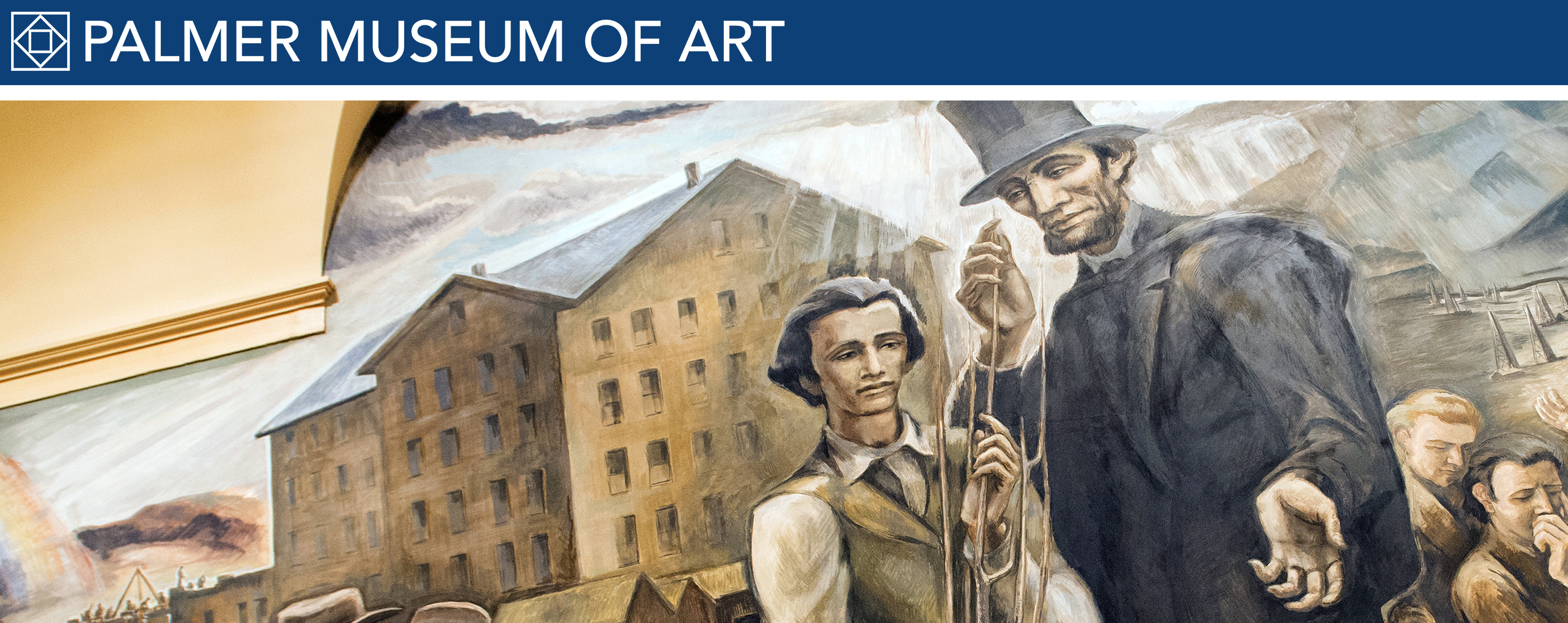Henry Varnum Poor
Studies for the Land Grant Frescoes
February 15 – June 5, 2005
In 1938, armed with funds supplied by the Class of 1932, Penn State professors Harold E. Dickson, Francis E. Hyslop, and J. Burn Helme approached distinguished muralist Henry Varnum Poor with the idea of decorating the north wall over Old Main’s grand staircase. The theme: celebrating Penn State’s founding as a Land Grant institution under the Morrill Act of 1862. Poor accepted the commission, signed a contract in September of 1939, and then spent nearly eight months developing numerous and detailed studies for the mural. By the following spring, he was ready to paint. Assisted by his daughter, the artist Anne Poor, who did most of the plastering, he executed his plan in true fresco style over the course of approximately seven weeks, between April 26 and June 18, 1940.
Additional funds were soon secured from the Classes of 1942, 1943, and 1944 to extend the design to the east and west walls of the balcony level in Old Main’s lobby. World War II intervened, however, and the money was put into government bonds. Following the war, students at the University renewed their interest in the frescoes and raised the necessary amount to bring Poor back to campus. In March of 1948, with the artist Willard W. Cummings acting as plasterer, Poor returned to work on the east balcony wall. The west wall was begun in November of that same year, and a third visit by the artist, made during the spring of 1949, brought both sites to completion. In the last two sessions Poor was joined once again by Anne, who this time was assisted in her plastering by then student (and later Penn State professor) Stuart Frost.
Held in tandem with Penn State’s sesquicentennial celebration, this exhibition features a number of preparatory studies for what have come to be known as the Land Grant Frescoes. Chief among these are several drawings of Abraham Lincoln, signer of the Morrill Act whom Poor featured as the central figure in the north mural. Also included are sketches of various Pennsylvania locales, made by the artist as he traveled throughout the state, which found their way into the mural, as well as several cartoons—full-size renderings developed as an aid in transferring the design to the wall. Additional paintings, drawings, and watercolors by Poor, selected from the museum’s permanent collection, round out the exhibition.
Photo by Pat Mansell
